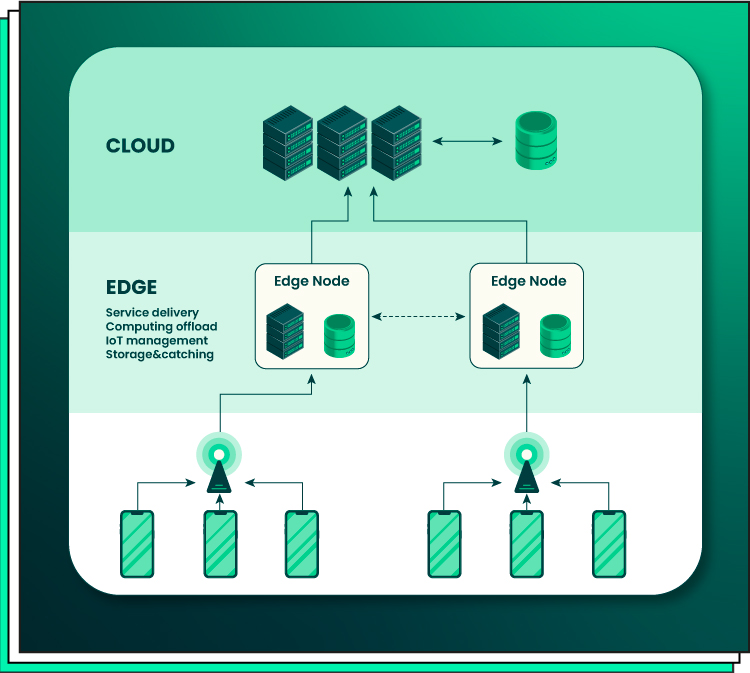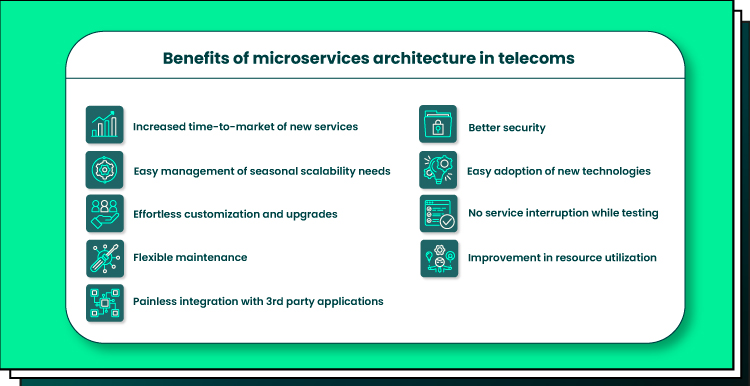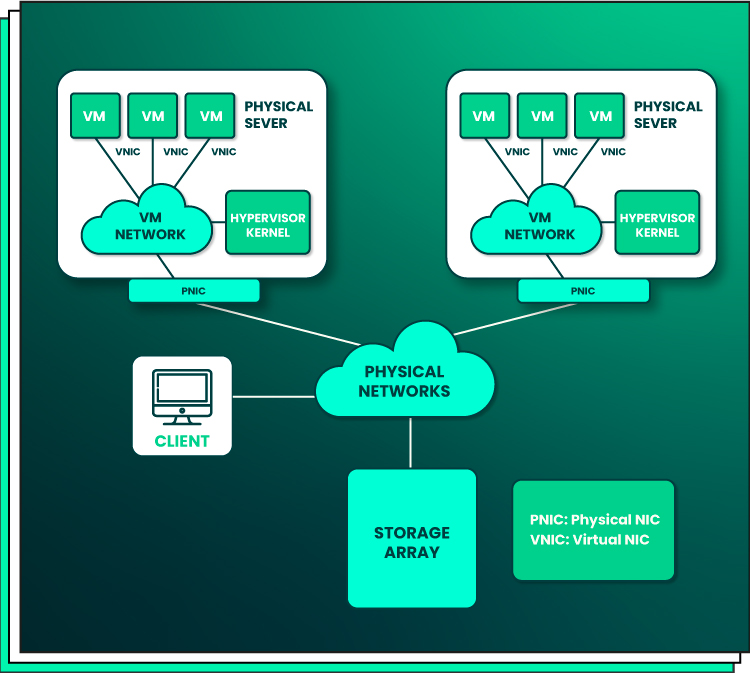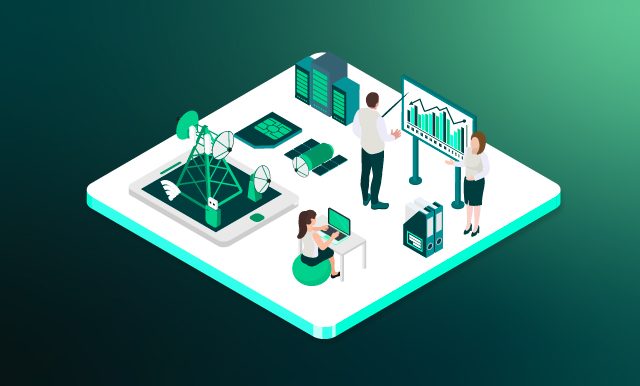In 2022, the global telecom market size was estimated at $1.805 billion. From 2023 to 2030, it is expected to grow at a CAGR of 6.2%. With the rise of 5G services, innovations in smartphone manufacturing, and other telecom industry trends, the sector will keep booming and attracting new audiences. While some market trends deeply penetrate the industry, others find no implementations and vanish.
In this article, we will delve into the essence of the telecom market, discover various software types implemented in this industry, and review the top telecommunication industry trends worth supporting. After reading this piece, it will be easier for you to identify the gaps in your business that can be solved with emerging technology and market innovations.
What Is Telecom?
Before we talk about the trends in the telecommunications industry, let’s figure out what telecommunication is. Telecommunication, which is shortened to telecom, is the term denoting the exchange of information and the process of communication over significant distances. Telecommunication appeared after the emergence and growth of electronic means capable of transmitting various types of data, including audio, text, visual data, etc. over distance.
Information transmitting technologies lying at the core of telecom trends cover a wide range of devices and mechanisms, including fiber optic networks, smartphones, cellphones, satellites, radio, TV, the Internet, and others. To enable data exchange in telecom technology, the 4 main components are needed:
- Sending station
- Receiving station
- Medium of signal transmission
- Data to be transmitted
A sending and receiving station should be equipped with a transmitter and receiver. These two functions can be fulfilled by a single device or technology called a transceiver. To transmit a signal, you will also need a medium, which can be an optical fiber, light, or electromagnetic field. If we leverage the latter to transmit data, such transmission is called wireless, as it uses no space to complete the process.
The essence of telecom networks
Above, we discussed the most primitive data transmission condition. In our example, only two stations were involved in the data exchange process. But as trends in the telecommunication industry demonstrate, multiple stations can take part in the telecom process, performing the role of receiver and sender simultaneously. This arrangement connecting all the components together and ensuring data exchange is called a telecom network.
The most popular and largest example of a telecom network is the Internet. Some other examples include Wide Area Networks (WAN), broadcast networks, telephone networks, taxi dispatch networks, cellular networks, etc.
The electrical signal due to which data is transmitted across the network is called a carrier. Carriers are enabled with the help of some form of modulation, which is usually digital modulation.
Top 5 Telecom Trends for 2023
Here is the list of the top telecommunications industry trends that have the biggest impact on the market’s growth. If you plan to enter this field, consider the following:
- Edge computing
- BSS/OSS modernization and microservices architecture
- Facilitated cybersecurity measures
- User experience first
- Network virtualization
1. Edge computing
Edge computing is one of the most important trends in telecom. It’s a computing approach under which computation takes place closer to the sources of data. To enable edge computing, engineers utilize content-distributed networks. This type of network emerged in the late 1990s but gained popularity in the 2000s, evolving into host apps or edge server components. By implementing this method, telecom companies can speed up the response time and optimize bandwidth.
Here is what the edge computing infrastructure looks like:

The thing is, people daily produce vast amounts of data. A growing part of that data is produced and stored by enterprises, typically outside the centralized cloud data center. With the rise of Internet of Things (IoT) technology, the volume of cloud data produced globally has grown tremendously. Such a rise has posed a challenge for network providers and adversely affected the data transfer rate as well as response time.
To solve this challenge, telecom providers have started leveraging edge computing, which lies in shifting the computation process from data centers to the edge of the network with the aim of decreasing the data center workload. Smartphones, cellphones, and network gateways composing the edge of the network take some part of the workload on themselves and perform computing tasks on behalf of the cloud.
By distributing the computation load to multiple network nodes, telecom companies get numerous benefits. They can utilize persistent data storage, caching, and efficient IoT management to decrease the volume of data to be transferred and lower latency. This is one of the trends in telecommunication that improves the response time, boosts the data transfer rates, and decreases the data transmission expenses.
2. BSS/OSS modernization and microservices architecture
To prepare their networks for the implementation of smart technologies, telecom businesses modernize their BSS and OSS. This process involves auditing, optimizing, and improving the business support systems and operation support systems with the aim of keeping them up-to-date and compatible with novel technology. As a result of BSS/OSS modernization, telecom companies get a fully manageable, flexible, and open infrastructure that can be controlled and adjusted to the evolving client needs.
As a part of the growing telecommunication industry trends, the industry representatives also perform the shift from monolithic to microservices architecture. Many providers have entered the telecom landscape long before modern technology evolved. As a result, many of them neglected the importance of adjusting their IT infrastructure to modern security, performance, and reliability demands for a prolonged time. However, the shift to microservices is a must if they want to break their infrastructure into multiple manageable components that are secure and flexible.
By leveraging this telecommunication trend, telecom providers can increase the stability and security of their technology solutions, enhance the time to market, boost service delivery speed, cultivate agility, and deliver excellent user experience.

3. Facilitated cybersecurity measures
As security issues and cyber attacks become more sophisticated, so do security protection measures. For telecom providers, cybersecurity and the protection of their client data and business operations remain the top priority. As they own and manage valuable data on a wide audience, they still are the top target of cyberattacks.
To make sure their system is well-protected, telecom providers implement complex security measures, from network infrastructure auditing and technology due diligence to third-party partnerships. In recent years, one of the growing telecommunication trends has been the implementation of blockchain, which enhances security, cuts operation costs, and protects telecom businesses from cyberattacks.
4. User experience first
Nowadays, delivering a supreme customer experience is a must not only for the telecommunications sector but for the sphere of professional services in general. It’s a user experience that determines how competitive a telecom business will be. To improve the experience of their clients, providers who keep pace with the latest telecom trends implement a client-centric approach. Two essential components of this approach are personalization and customization. They help increase client loyalty and navigate successfully through dynamic user demands.
To master a client-centric approach, telecom providers leverage smart data analytics tools. Usually, their services cover a wide audience that can be broken down into multiple segments. It’s close to impossible to manually analyze each segment and its dynamics and adjust to the changing client needs. The integration of smart analytics is the solution enabling telecom businesses to get fresh data on user preferences and patterns and automate personalization.
For instance, by leveraging this data, telecom service providers can craft customized marketing techniques and business strategies, create personalized offerings, track market dynamics and tendencies, identify new revenue opportunities, and much more. They are also able to drive client engagement and forge long-lasting relationships with their audience.
5. Network virtualization
Network virtualization and disaggregation is one of the trends in the telecom industry driven by the spread of connected devices and the growth of apps. Network functions virtualization, or NFV, is the shift of network functions from network hardware to virtual machines. That is, network functions are run as software modules composing a complex IT infrastructure that is easy to manage and flexible.

With NFV, telecom operators can separate the services from hardware and substitute routers and firewalls with virtual machines. As a result, they can expand their service line without the need to purchase and install new hardware.
This strategy increases the efficiency of business models in the telecom sector as the virtualization time is decreased to hours instead of spending months on traditional network deployment. This also leads to fewer maintenance expenses as the virtualized services can run on generic services without the need to purchase sophisticated proprietary hardware.
Do you want to integrate any of the latest trends in the telecommunications industry into your digital infrastructure? Contact Forbytes to get professional help. Our team employs software engineers with reach expertise. We will pick the best team players for your case, considering the experience and competencies vital for achieving success in the telecommunications industry.
Telecommunication Software Types and Their Purposes
In this section, we will talk about the main types of software involved in telecommunications. Let’s look at the list below:
- Operations support systems
- Business support systems
- Corporate portals
- Telecom billing systems
- Tailored telecom apps for web and mobile
Operations support systems
The notion of OSS is tightly linked to the discussion of telecommunication trends. Operations support systems (OSSs) are built to support the back-office services and operations in the telecom industry and ensure the connectivity of physical equipment within the system. Examples of OSSs are telecom inventory systems or fault management software. With the help of an operation support system, a telecom company can manage, arrange, keep track of, provision, and maintain their network services.
Business support systems
Business support systems (BSS) are used in the telecom industry to manage business operations targeted at the client. For example, by using such a system, communications service providers can accept payments, take, manage, and orchestrate client orders, manage business revenues, and more. The difference between OSS and BSS lies in the fact that OSS manages the operations under the roof (composing the back-end part of the telecom systems), while BSS focuses on client-centered operations.
Having more than 12 years of experience, Forbytes can help you conduct the software and hardware audit of your business to make sure you deliver services securely, efficiently, and in the best way for a customer. Check our service line below:
Corporate portals
Corporate portals are websites created for internal use. On a corporate portal, a company can place proprietary information and allow employees to access it. Such websites often contain corporate policies, internal news, corporate documentation, department-specific information, etc. Corporate portals are unavailable to the public. More sophisticated corporate portals leverage top telecom trends and serve not only as internal websites but also as platforms used for internal data integration, task automation, and tool management.
Telecom billing systems
The telecom billing system is software used for the management of billing information. Such systems are helpful in managing all billing-related processes, including the management of consumption data, billing generation and sending, payment processing, debt collection management, and more.
Telecom billing systems lie at the core of the telecom business, as they help telecommunications companies manage the most responsible part of their work — the financial side. The systems are leveraged by mobile wireless communication providers, mobile virtual network operators, telephone providers, Internet providers, TV providers, and others. The main functions of such systems include information and data management, finance management, as well as operation management and control.
Tailored telecom apps for web and mobile
If you are a telecom company looking for a custom solution, there are plenty of ideas on how to bring your plans to life. For this, you can plan out and build a tailored application for the web or mobile. Such an app will serve your custom needs, bringing automation and increasing the efficiency of your business operations.
You can either build such a tool from scratch or integrate off-the-shelf software into your business infrastructure. Our experienced IT consultants can help you select the optimal option and smoothly integrate it with your software with no damage to your daily operations.
What We Offer
In this article, we discussed the essence of the telecommunication concept and uncovered how it is implemented in business. Now, you are aware of the telecom industry trends and are ready to adjust to the changing user needs.
Forbytes is a software development partner that can help you integrate a telecommunication solution into your business infrastructure or build such software from scratch. In most cases, it’s more efficient for a business to integrate an off-the-shelf solution without the need to invest in full-scale software development projects.
Contact us to get a deep review of your business case and a free consultation on the best tech solution that aligns with your goals and needs.

Our Engineers
Can Help
Are you ready to discover all benefits of running a business in the digital era?

Our Engineers
Can Help
Are you ready to discover all benefits of running a business in the digital era?








